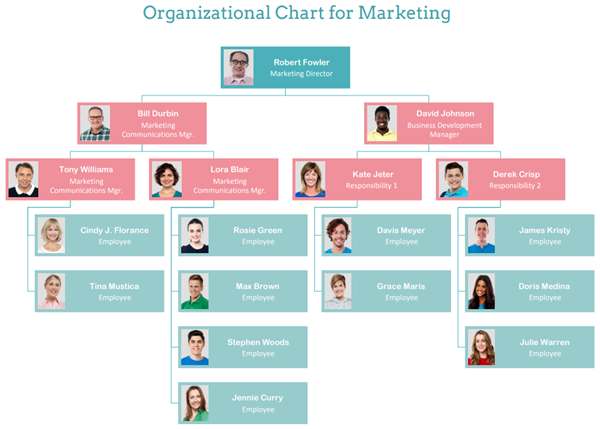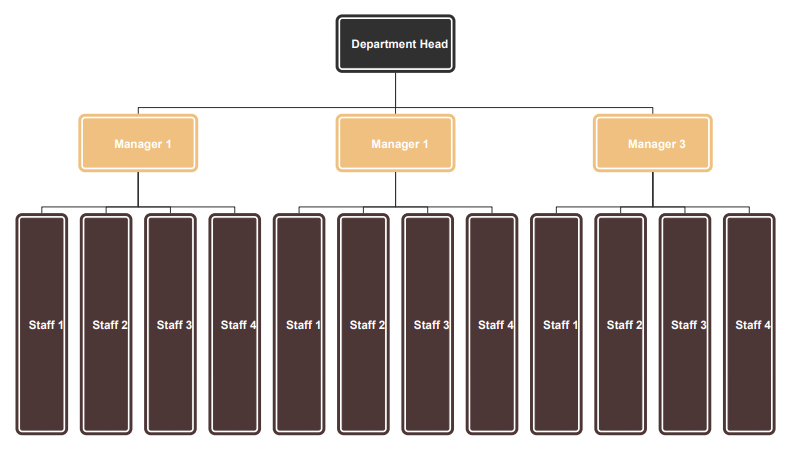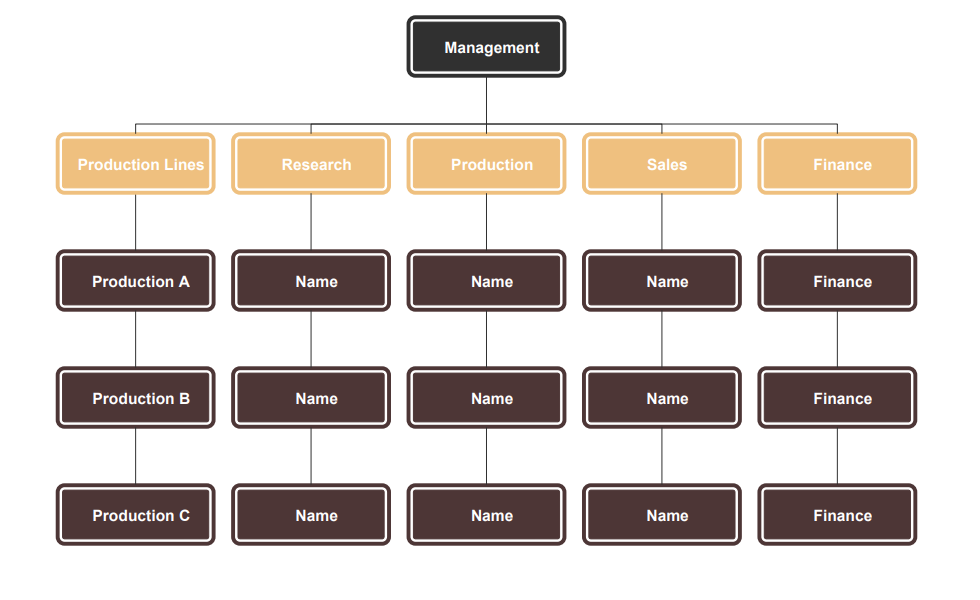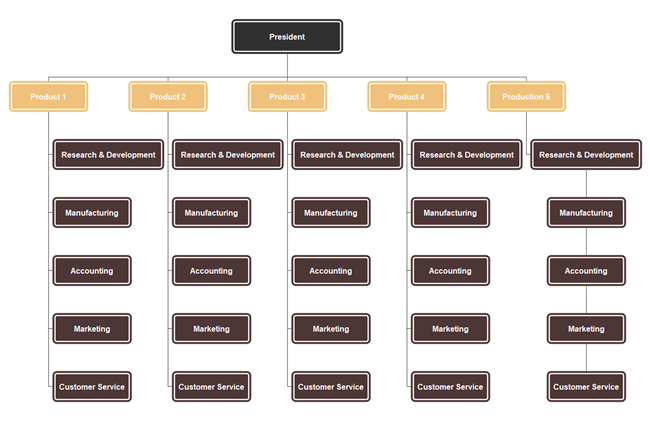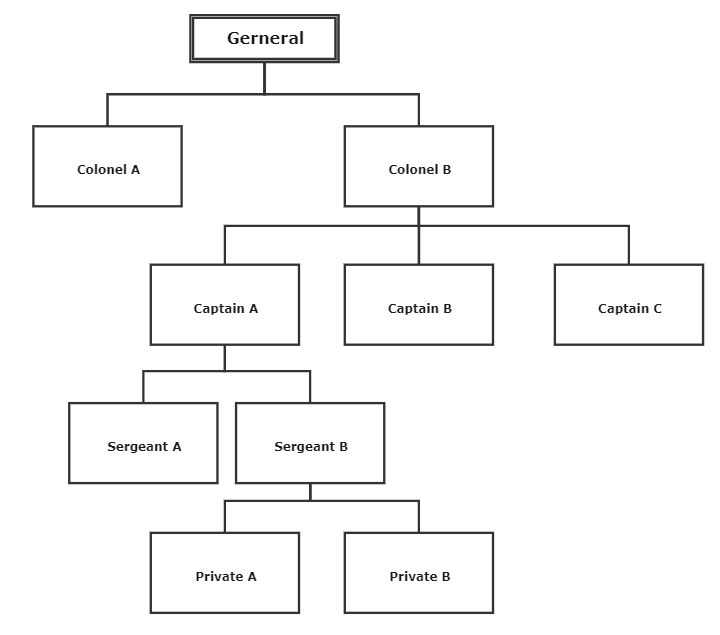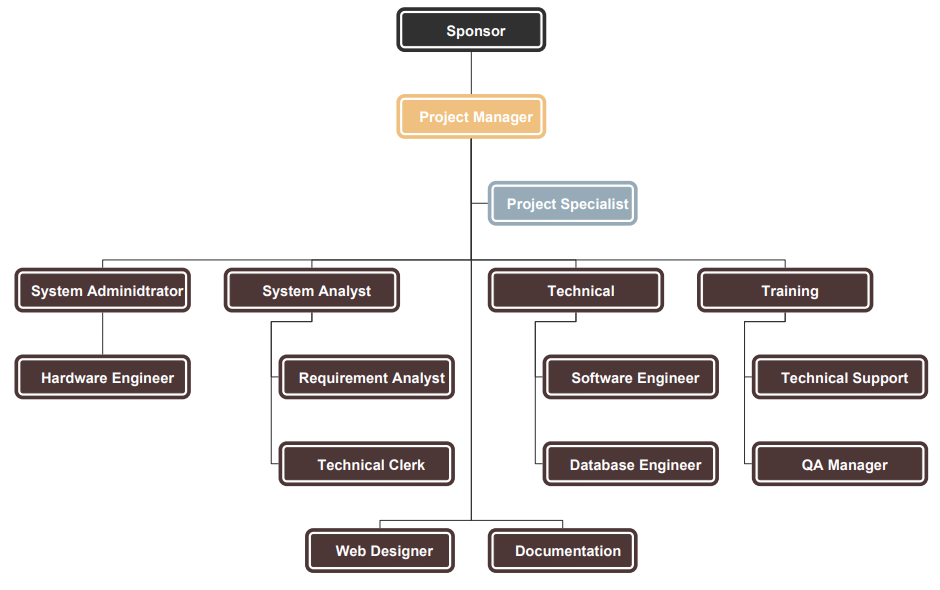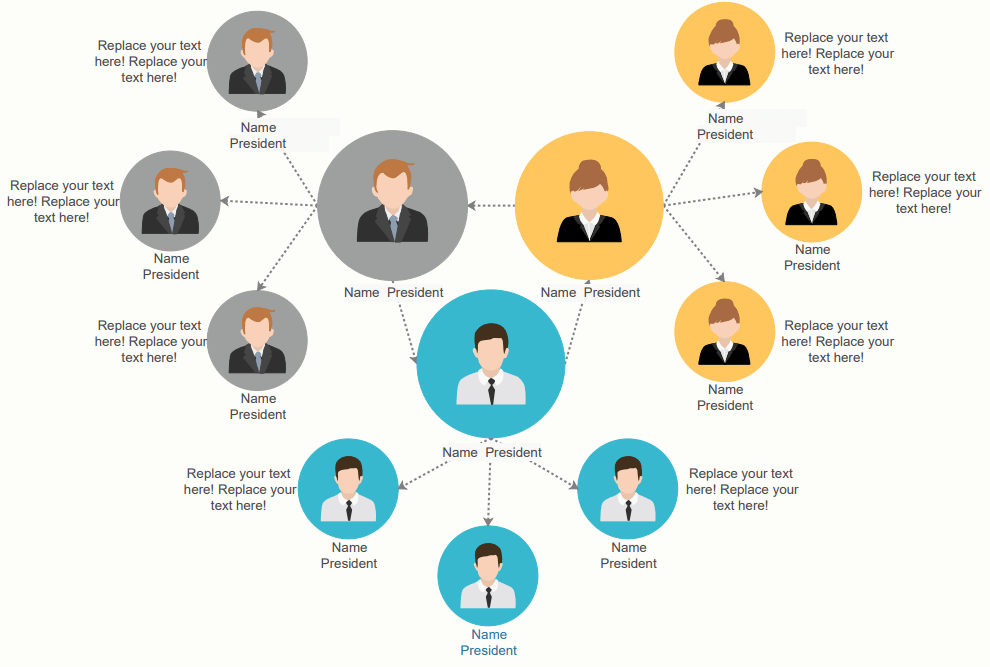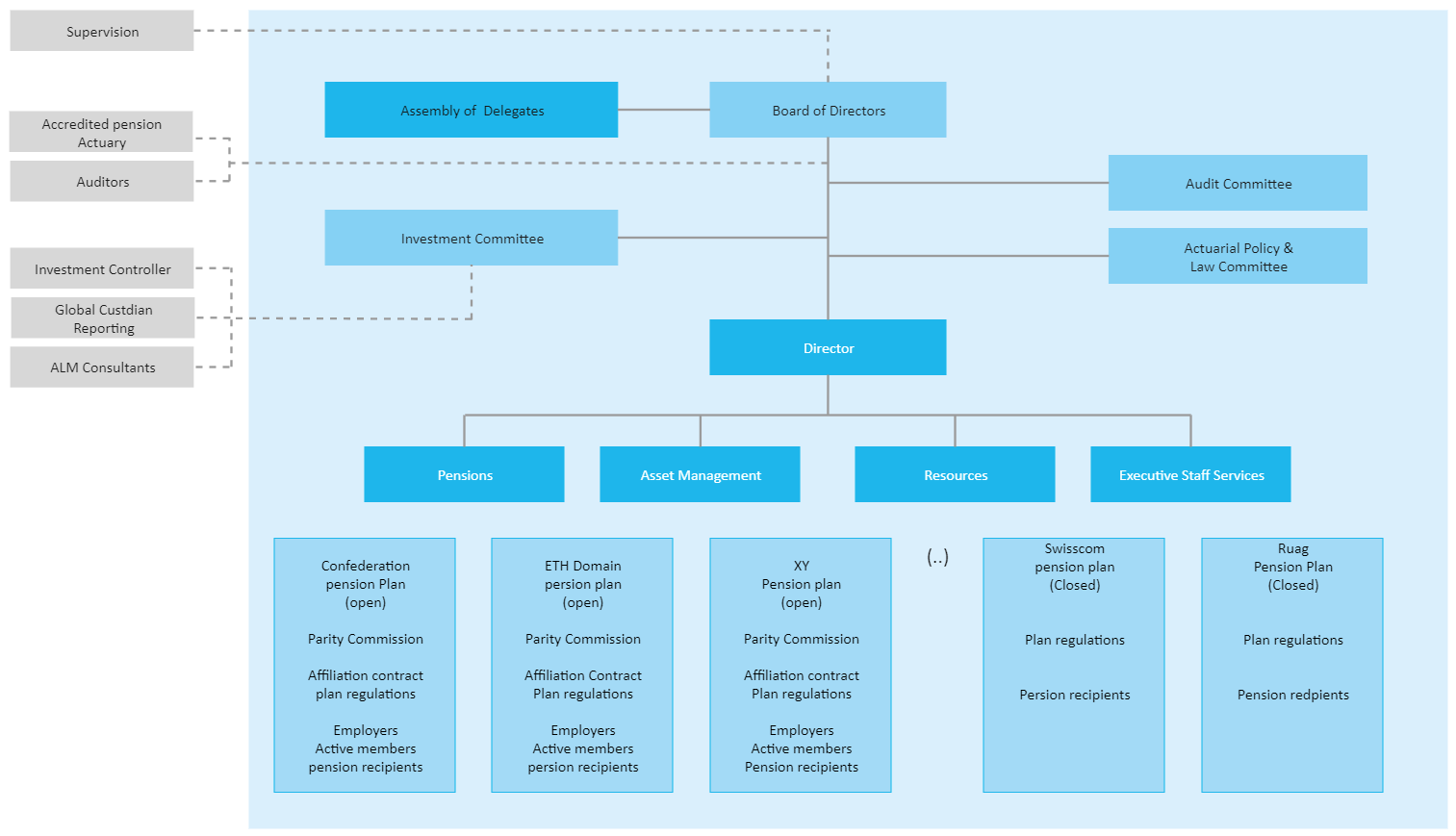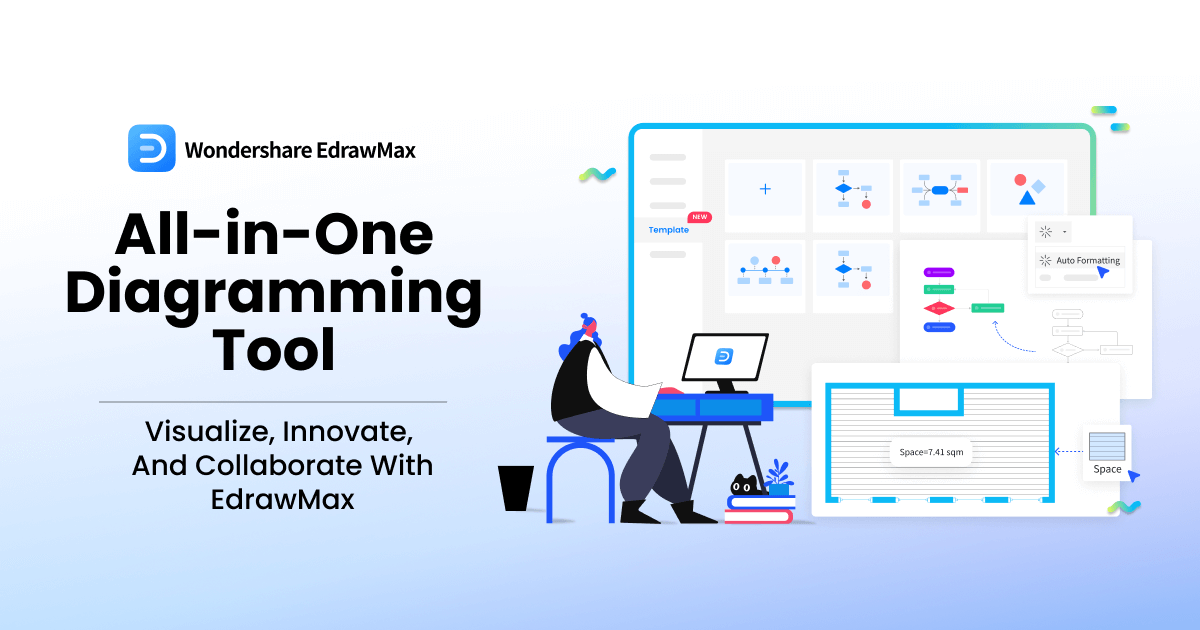Types of Organizational Structures
Organizational structures determine the culture and internal workings of an organization. These structures determine the role of each individual, their reporting and relationship with other employees, and the organization’s overall communication.
The organizational structure is fundamental, depending on the industry and type of the organization. If your structure fails to meet the needs of the business, then it is useless.
Features of an Organizational Structure
To fully understand the workings of an organizational structure, you need to first look at the features of an organizational chart. So, let’s dive right in:
Centralization & Decentralization
An organization can be centralized or decentralized depending on how the decisions are made. If each team or department is making its own decisions, then the organization is decentralized. If the decisions are made by top-level management only, then it is centralized.
Span of Control
The span of control shows what tasks are the manager’s responsibility. These can include the people under his management and all the tasks related to that department.
Chain of Command
The chain of command or line of reporting means the multiple approvals needed to get a task done. One must ensure everyone they are reporting to must be in the loop. All issues, requests, and proposals must be effectively communicated to management.
Work Specialization
Employees working in a specific department specialize in the tasks related to their department. This limits their knowledge and skills. Some organizational structures allow employees to work in multiple departments at once, improving their skill set immensely.
Types of Organizational Structures
There are multiple types of organizational structures to cater to the needs of all kinds of businesses. Let’s look at some of the significant types of Organizational structures:
Functional Organizational Structure
The functional structure is the most common kind of organizational structure, and it greatly resembles hierarchical structure. The organization is divided into multiple departments, and each department is led by a Department head. The department head directly reports to the CEO.
Now let’s look at the advantages and disadvantages of using a functional organizational structure:
Pros:
- This organizational design can work well for companies of all sizes.
- By working in their department, employees can become specialized in their roles.
- The department becomes self-sufficient and innovative like this and creates a sense of a team.
Cons:
- This creates silos within an organization as inter-department communication is minimal.
- Employees outside the department have minimal knowledge about the department.
Who Need: Functional structure is perfect for organizations with multiple departments, and each department reports to its department head.
Horizontal/Flat Organizational Structure
A flat or Horizontal structure is perfect for encouraging innovation and unity amongst organizations. In this structure, all employees have equal power, but the executive management has more than the others. There is no hierarchy, and everyone besides the executive management is on the same level.
Pros:
- Flat structures ensure faster implementation of ideas with a lesser chance of error.
- Employees have more independence and responsibility here.
- Flat organization structures increase innovation and communication.
Cons:
- Employees lack any kind of supervision.
- The scalability deteriorates as the company grows.
- There is confusion around reporting procedures.
- Employees develop no specialized skills.
Who Need: This structure is perfect for a new startup with just a few employees. Big tech businesses are also taking on this approach to increase innovation by improving communication between employees.
Matrix Organizational Structure
The matrix structure is the combination of functional and Projective Organizational structures. Even though the organization is divided into departments, the departments work together on each task project-wise. Each member can fluidly move from one department to another.
Pros:
- There is greater flexibility as supervisors can choose the best employees for the job.
- Employees have the chance to work in multiple departments and learn new skills.
- The chart is dynamic to keep up with the varying responsibilities of individuals.
Cons:
- There might be some conflicts between the supervisor of the project and department managers.
- The organizational chart is not prone to regular changes.
Who Need: This structure is perfect for dynamic organizations that work on tasks project-wise. This is the perfect structure for organizations that take a modern approach.
Divisional Organizational Structure
The divisional organizational structure divides an organization according to its product lines or geographical locations. This ensures that each of the products has its autonomy and can operate in its way. Each product or line has its commanding officer in this structure, as you can see in the image below.
Pros:
- Each product’s departments have the flexibility to work as they like.
- Each department has room for creativity and innovation.
- This structure allows every product line to be more adaptable and personalize their practices according to the product.
Cons:
- However, this chart may cause duplication of resources as one department might be unaware of the other.
- The departments have little to no communication with each other that disrupts the unity amongst them.
- This structure can also cause internal competition amongst departments which takes their focus away from external competitors.
Who Need: This structure is perfect for large conglomerates or companies with a wide range of products or geographical locations. This structure will help them focus on each product individually rather than the company as a whole.
Line Organizational Structure
Line organization is also called Military organization or scalar type organization. In this type, authority flows from the topmost person to the low ranks. Each person above the other has direct authority over them.
Pros:
- Line organizations are simple to work with, and they are cost-effective.
- The coordination between employees is quick and efficient.
- The discipline is excellent.
Cons:
- Employees are only limited to their department and have no skills other than those required by their department.
- The structure is rigid and inflexible with autocratic management.
- There is nowhere to complain if the manager is problematic.
Who Need: This structure is perfect for large conglomerates or companies with a wide range of products or geographical locations. This structure will help them focus on each product individually rather than the company as a whole.
EdrawMax
All-in-One Diagram Software
- Superior file compatibility: Import and export drawings to various file formats, such as Visio
- Cross-platform supported (Windows, Mac, Linux, Web)
Team-based Organizational Structure
The team structure is quite similar to the matrix structure; however, the supervisors are fluid rather than the team members. This creates a decentralized structure. The supervisors can collaborate with employees of other departments and make their team. After the task is complete, the members return to their respective departments.
Pros:
- When employees are not limited to their department, this improves productivity and leads to growth.
- It minimizes employee management tasks and prioritizes employee experience.
- This structure ensures transparency.
Cons:
- This structure might be a bit confusing for employees who are used to traditional roles.
- Employees might have to work harder to get noticed and promoted.
- There is nowhere to complain if the manager is problematic.
Who Need: This structure is for organizations that work on a project basis and need a team. This decentralized structure will allow each team to have full autonomy over how the project is done.
Project Organizational Structure
In Project Organizational Structure, an organization takes on one project at a time. The supervisor is a project manager who manages resource allocation, decision making, and conflict management. Unlike other structures like team-based and matrix structures, once the project is complete, the team disassembles. The structure is centralized, and a hierarchy exists in this structure.
Pros:
- Efficient Decision making and communication.
- Improves employee flexibility and versatility.
- This also makes employees more cooperative as employees know they are on a deadline.
Cons:
- The team-based structure is too short term to provide employees enough time to hone their skills.
- The stress of the project deadline can affect the mental health of employees.
- The project manager may have all the power with little given to team members.
Who Need: This structure is for organizations that work on a project basis and need a team. This decentralized structure will allow each team to have full autonomy over how the project is done.
Network Organizational Structure
The network structure is excellent for companies that outsource a lot of their production. The network keeps track of all the suppliers, third-party companies, and even departments within the company. This might look too much to cover in one network diagram, but this is a handy tool to get a decentralized view of everything.
Pros:
- This structure keeps track of everyone inside the organization and outside it. You can see how functional roles are distributed amongst freelancers, third-party groups, and company employees.
- It improves communication and collaboration between employees.
- It boosts flexibility and innovation.
Cons:
- It can be a bit complex, especially where external parties are concerned.
- There is no proper decision-making system.
Who Need: This structure is best suited for companies operating internationally or in multiple cities. Big multinationals or conglomerates may use this structure to keep track of all their outsourced data.
Hybrid Organizational Structure
A hybrid structure is one in which multiple employees are reporting to multiple bosses. One employee may be a part of several teams working on different projects. In that case, the employee will report to multiple people.
Pros:
- This structure has high flexibility, and employees will be able to learn many skills outside their department.
- Organizations with hybrid structures need to hire less and a limited number of employees only as they can easily transfer employees from one area to another.
- Employees in hybrid structures tend to have a better skill set due to working on multiple projects.
Cons:
- This creates conflict in reporting.
- Employees may feel stressed due to working on multiple projects.
Who Need: Organizations that have chains across the whole country might use hybrid structures based on geography. They may transfer employees from one area to another.
Divided by Organization Relationship
Line Organizational Chart - direct relationship between superior and subordinate.
Lateral Organizational Chart - relationship between different departments on the same hierarchical level.
Staff Organizational Chart- relationship between a managerial assistant and other areas. The assistant will be able to offer advice to a line manager. However, they have no authority over the line manager actions.
Functional Organizational Chart - relationships between specialist positions and other areas. The specialist normally have authority to insist that a line manager implements any of their instructions.
Which Organizational Structure is the Best?
Not all of the charts mentioned above are ideal for all kinds of businesses. You must choose the organization chart based upon multiple factors like the business hierarchy, employee empowerment, interaction, and innovation. The wrong kind of organizational chart will make all the effort worthless as it won’t be effective.
EdrawMax offers multiple types of organizational charts and doesn’t limit you to just a few types. You can use templates to create them, or you can create one straight from scratch. The extensive symbol library offers you all the symbols related to organizational charts. The best part about using EdrawMax is its interface. With a user-friendly interface similar to that of MS Office, it is effortless to navigate your diagram, saving you time.
EdrawMax will cater to all your diagramming needs, especially those related to organizational charts.
More Related
General Diagram Types - Overview
Types of Project Management Diagram
Types of Floor Plan
